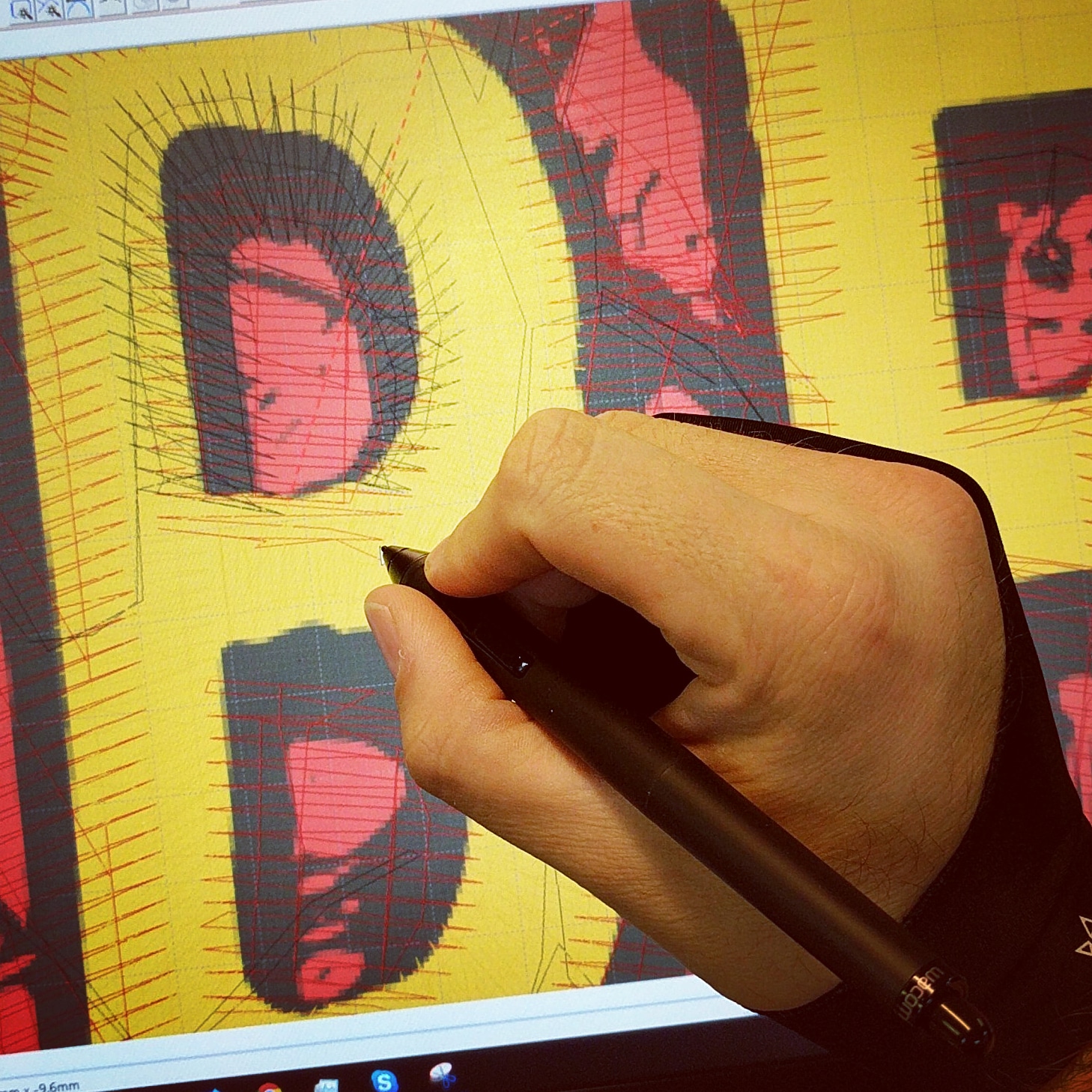Best Digitizing for Embroidery: Improve Your Jobs
Best Digitizing for Embroidery: Improve Your Jobs
Blog Article
Grasping the Needlework Digitizing Process: Your Ultimate Guide
Embroidery digitizing is a meticulous craft that calls for precision and know-how to equate detailed layouts right into electronic layouts for machine needlework. As craftsmens get started on this journey to understand the embroidery digitizing process, a thorough understanding of the essentials sets the structure for excellence. Nonetheless, past the fundamental understanding exists a realm of advanced software, specialized tools, and nuanced techniques waiting to be checked out. By diving into the nuances of digitizing, one can unlock a world of creative possibilities and elevate their embroidery tasks to brand-new elevations.

Recognizing Embroidery Digitizing Basics
Embroidery digitizing essentials develop the structure whereupon intricate styles are converted into machine-readable styles for precise stitching. This initial action in the embroidery digitizing process is important for ensuring that the last embroidered product is a devoted representation of the original design. Understanding embroidery digitizing basics includes grasping key ideas such as stitch types, sew instructions, thickness, underlay, and draw settlement.
Stitch kinds play a crucial function in establishing the visual and textural outcome of the embroidered layout. By selecting the proper stitch type, whether it be satin, fill, or running stitch, digitizers can attain the wanted impact and improve the total high quality of the needlework. In addition, sew direction influences the flow and measurement of the design, while density establishes the spacing and protection of the stitches.
Moreover, padding sewing gives stability to the design by securing the material and preventing distortion throughout the embroidery process. Draw compensation is one more crucial consideration to combat the all-natural tendency of material to agreement when sewn. Understanding these embroidery digitizing fundamentals is essential for producing professional-quality stitched items.
Selecting the Right Digitizing Software Program
Choosing the appropriate digitizing software program is a critical choice that dramatically influences the performance and quality of the needlework digitizing procedure. Digitizing for Embroidery. When selecting the best digitizing software program, it is essential to consider variables such as the intricacy of designs you plan to create, the user-friendliness of the software application, the level of client assistance used, and the compatibility with your embroidery maker
There are numerous digitizing software application alternatives readily available out there, varying from fundamental programs for newbies to innovative software program for specialist digitizers. Some prominent choices include Wilcom EmbroideryStudio, Hatch Embroidery Software, and PulseID. These software provide a wide variety of tools and features to help you produce intricate layouts with ease.
Before choosing, it is advisable to explore the different software program alternatives via totally free tests or demonstrations to identify which one finest matches your needs. Furthermore, checking out reviews and looking for recommendations from seasoned digitizers can give important insights right into the toughness and weaknesses of each software (Digitizing for Embroidery). By meticulously evaluating your requirements and contrasting the attributes of different digitizing software program, you can make an enlightened option that boosts your needlework digitizing workflow
Digitizing Devices and Strategies

Optimizing Layout Settings for Needlework
Mastering the ins and outs of layout setups is basic in achieving optimum outcomes in the embroidery digitizing process, building upon the structure laid by recognizing digitizing tools and techniques. When enhancing layout settings for embroidery, it is essential to take into consideration aspects such as stitch kind, density, padding, draw compensation, and registration. Enrollment settings straighten different original site elements of the design accurately, maintaining total layout integrity.

Troubleshooting Common Digitizing Issues
When running into typical digitizing problems throughout the needlework process, it is important to recognize the origin and apply reliable services without delay. One typical problem is stitch density concerns, where stitches might be as well thick, creating the textile to tighten, or also sporadic, leading to spaces in the style. Changing the stitch thickness settings in the digitizing software application can aid fix this problem.
An additional frequent challenge is thread breaks throughout the embroidery process. This can occur as a result of different reasons such as wrong tension setups, plain needles, or utilizing low-grade string. Ensuring correct upkeep of the embroidery maker, including normal needle adjustments and tension modifications, can lessen the incident of you can look here string breaks.
In addition, design registration mistakes can result in misaligned components within the embroidery design. Examining the design placement in the digitizing software program and making needed modifications before sewing can aid in avoiding this problem. By attending to these usual digitizing issues immediately and efficiently, you can make certain a smoother needlework procedure and high-quality completed items.
Conclusion
In conclusion, grasping the needlework digitizing process needs a solid understanding of the essentials, the appropriate selection of software program, and expertise of devices and strategies. Enhancing style setups and repairing usual digitizing concerns are critical action in ensuring high-quality embroidery results. By complying with these actions carefully, one can achieve precision and performance in the digitizing process.
Report this page